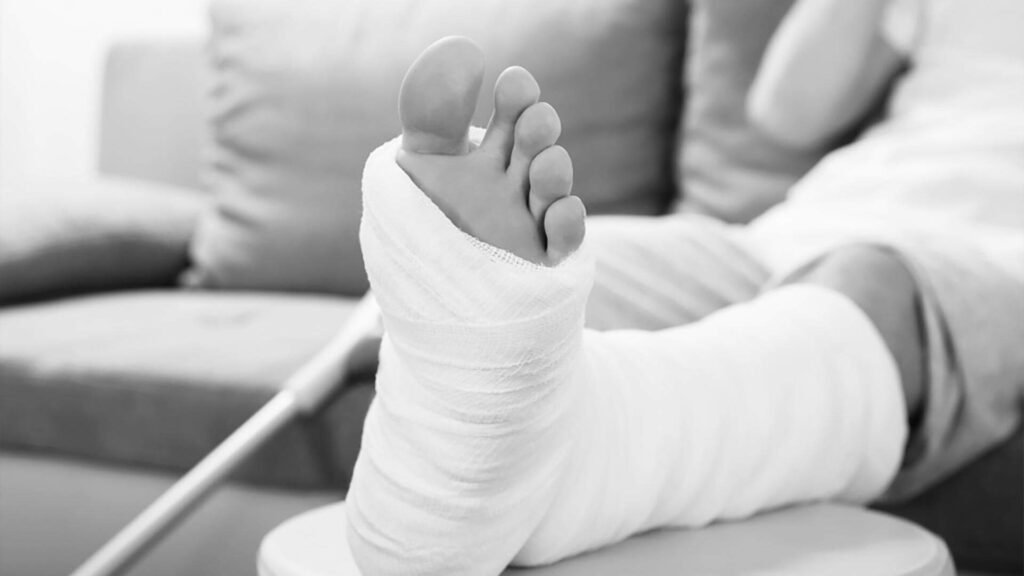In the realm of personal injury claims, “pain and suffering” is a term that often emerges, yet its intricacies can be elusive. While medical bills or lost wages are tangible and straightforward to quantify, how does one assign a monetary value to the emotional and physical distress experienced after an accident? This guide aims to shed light on the concept of pain and suffering damages and the methodology behind its calculation, ensuring that individuals in Las Vegas have a clear understanding of this critical component of personal injury cases.
Understanding Pain and Suffering Damages
“Pain and suffering” is a legal term that encompasses both the physical and emotional distress caused by an injury. Unlike economic damages, such as medical bills or lost wages, pain and suffering damages are intangible and can be more challenging to quantify.
Physical Pain and Suffering
This refers to the tangible discomfort, pain, or any physical disability or impairment that an individual might experience post-accident. It’s not just about the immediate aftermath but also the prolonged or chronic pain that might persist. Examples include:- Long-term disability or impairment affecting daily life
- Anticipated limitations to physical abilities in the future
- Persistent physical discomfort and pain
- Significant disfigurements like scars, amputations, or burns
- Loss of bodily function hindering quality of life
Emotional Pain and Suffering
Beyond the physical realm, accidents can leave scars on one’s mental well-being. This includes feelings of anxiety, depression, loss of enjoyment in previously loved activities, or even more severe conditions like post-traumatic stress disorder (PTSD). Some manifestations of emotional pain and suffering are:- Disturbed sleeping or eating patterns due to emotional impact
- Inability to engage in activities once enjoyed, leading to a loss of pleasure
- Overwhelming fear, anger, or humiliation stemming from the incident
- Unpredictable mood swings affecting relationships and daily life
Establishing the Link
In personal injury cases, it’s crucial to establish a direct link between the injuries and the resulting mental or physical distress. This connection is vital for recovering compensation for pain and suffering. Factors like consistency in medical records, testimonies, and the overall impact of the injury on daily life play a significant role in establishing this link.
Methods of Calculation
Quantifying pain and suffering is inherently challenging due to its subjective nature. However, the legal system employs two primary methods to bring structure to this process:
Multiplier Method:
The Multiplier Method involves taking the tangible economic damages, such as medical bills and lost wages, and multiplying them by a certain number based on the severity of the pain and suffering.
For instance, if you incurred $100,000 in economic damages and a multiplier of 1.5 is applied, your pain and suffering damages would amount to $150,000. Using a multiplier of four, your claim would escalate to $400,000.
| Economic Damages | Multiplier | Pain & Suffering Damages |
| $20,000 | x 3 | $60,000 |
| $10,000 | x 2 | $20,000 |
| $50,000 | x 4 | $200,000 |
The multiplier chosen is influenced by several factors, including:
- Severity of Injuries: More severe injuries typically warrant a higher multiplier.
- Duration of Recovery: Longer recovery times can increase the multiplier.
- Impact on Daily Life: If the injury significantly disrupts daily activities, a higher multiplier might be used.
- Clarity of Liability: If the other party’s liability is clear-cut, it can affect the multiplier upwards.
Per Diem Approach:
The Per Diem Method assigns a daily monetary value to the pain and suffering experienced by the victim. This daily rate is then multiplied by the number of days the victim is expected to recover.
For example, if the daily rate for your pain and suffering is determined to be $200 and the expected recovery time is 90 days, the total pain and suffering damages would be $18,000.
| Daily Rate | Recovery Time | Pain & Suffering Damages |
| $200 | 90 days | $18,000 |
| $150 | 60 days | $9,000 |
| $250 | 120 days | $30,000 |
Factors influencing the daily rate include:
- Severity of the Daily Pain: More intense daily pain can lead to a higher daily rate.
- Disruption of Daily Activities: If the injury prevents routine activities or work, it can increase the daily rate.
- Nature of the Medical Treatment: Daily treatments or therapies can influence the rate.
Factors and Adjustments Influencing the Calculation
When determining the appropriate amount for pain and suffering damages, several elements and adjustments come into play:- Severity and Type of Injury: The nature of the injury, whether it’s a minor sprain or a traumatic brain injury, plays a pivotal role in the calculation.
- Recovery Time and Prognosis: Injuries that take longer to heal or have long-term implications typically result in higher compensation.
- Impact on Daily Life: Injuries that hinder daily activities, hobbies, or work can amplify the damages. For instance, a professional pianist suffering a hand injury might claim higher pain and suffering damages due to the injury’s impact on their career.
- Age of the Victim: Younger victims and minors who have been injured might receive higher compensation, especially if the injury affects their entire life.
- Credibility and Consistency: The alignment between the victim’s diagnosis, injuries, claims, statements, medical records, and testimonies can influence the perceived legitimacy and value of the pain and suffering claim.
- Permanent Effects: Accidents resulting in permanent disabilities or disfigurements can significantly increase the claim value.
- Plaintiff’s Overall Credibility: Factors such as the likeability of the plaintiff, their criminal record, and overall credibility can influence the final compensation amount.
- Medical Support: Robust medical documentation and expert testimonies to substantiate the pain and suffering claims can bolster the claim value.
Legal Considerations Specific to Las Vegas
Navigating the legal landscape of pain and suffering damages in Las Vegas requires an understanding of specific state regulations and considerations:
- Caps or Limits: In Nevada, while there are no caps on most personal injury cases, there are limits on medical malpractice claims. This cap for non-economic damages in medical malpractice cases was set at $350,000. It’s essential to be aware of these distinctions to set realistic expectations for potential compensation.
- Comparative Negligence Rule: Nevada operates under a modified comparative negligence system. This means if you’re found to be partially at fault for the accident, your compensation can be reduced by your percentage of fault. However, if you’re more than 50% at fault, you may not be eligible to receive any compensation.
- Workers’ Compensation Limitation: In Nevada, pain and suffering damages are not recoverable in workers’ compensation cases. While workers’ compensation covers medical expenses and lost wages, it does not account for non-economic damages like pain and suffering.
The Role of Expert Testimony
Expert testimonies play a pivotal role in substantiating claims of pain and suffering:
- Medical Professionals: Doctors, surgeons, and other medical experts can provide detailed insights into the nature and severity of injuries, the expected recovery timeline, and the potential for long-term implications.
- Therapists and Counselors: Mental health professionals can attest to the emotional and psychological impact of an accident, shedding light on trauma, anxiety, depression, or PTSD.
- Consistent Medical Treatment: Regular visits to healthcare providers and maintaining a consistent record of treatments not only aids in recovery but also strengthens the credibility of the claim.
- Decades of Expertise: With over 40 years in the field, our firm has a deep understanding of the intricacies of car accident settlements in Las Vegas.
- Proven Track Record: Our commitment to clients is reflected in our history of securing favorable settlements, ensuring they receive the compensation they deserve.
- Local Knowledge: Being well-versed in Nevada’s legal landscape means we can navigate the system efficiently and effectively on your behalf.
Pain and Suffering Settlement FAQs
Pain and suffering damages encompass both the physical discomfort and emotional distress caused by an injury. While medical expenses or lost earnings can be directly quantified, pain and suffering damages are more intangible.
The value is typically determined using methods like the Multiplier Method or the Per Diem Approach, but it can also be influenced by various factors such as the severity of the injury, recovery time, and the impact on daily life.
Yes, emotional traumas such as anxiety, depression, PTSD, and loss of enjoyment in previously loved activities are considered under pain and suffering damages.
In Nevada, there are limits on medical malpractice claims for non-economic damages, but most personal injury cases don’t have such caps.
If you’re found to be partially at fault for the accident, your compensation can be reduced by your percentage of fault. If you’re more than 50% at fault, you may not be eligible to receive any compensation.
In Nevada, pain and suffering damages are not recoverable in workers’ compensation cases. Workers’ compensation covers medical expenses and lost wages but not non-economic damages like pain and suffering.
Expert testimonies from medical professionals, therapists, and other experts can substantiate claims of pain and suffering, providing a more accurate representation of the damages.
While you can technically handle any legal matter on your own, the complexities of quantifying pain and suffering, understanding state-specific regulations, and negotiating with insurance companies can be overwhelming. Experienced lawyers can advocate for a fair assessment and counter insurance company tactics.
A consultation can provide clarity on the potential value of your claim, the nuances of Nevada law, and the best strategy moving forward. Our team has over 40 years of experience in handling such cases in the Las Vegas area.
It’s essential to gather all relevant medical records, testimonies, and evidence. Then, reach out for a free consultation with a personal injury law firm like Jack Bernstein Injury Lawyers to understand your rights and potential compensation.
Contact Us for a Free Consultation
If you have been injured in an accident, contact Jack Bernstein Injury Lawyers for a free, no obligation consultation with experienced Las Vegas accident lawyers. You will gain an advocate for every stage in the claims process until you have the compensation you deserve.
Jack Bernstein Injury Lawyers is available to help you handle your injury claim in the Las Vegas metropolitan area and beyond. Jack Bernstein and his team can offer you the personalized service and legal representation you deserve after an accident.
Call us at (702) 633-3333 or contact us today for a free consultation to discuss your case.


